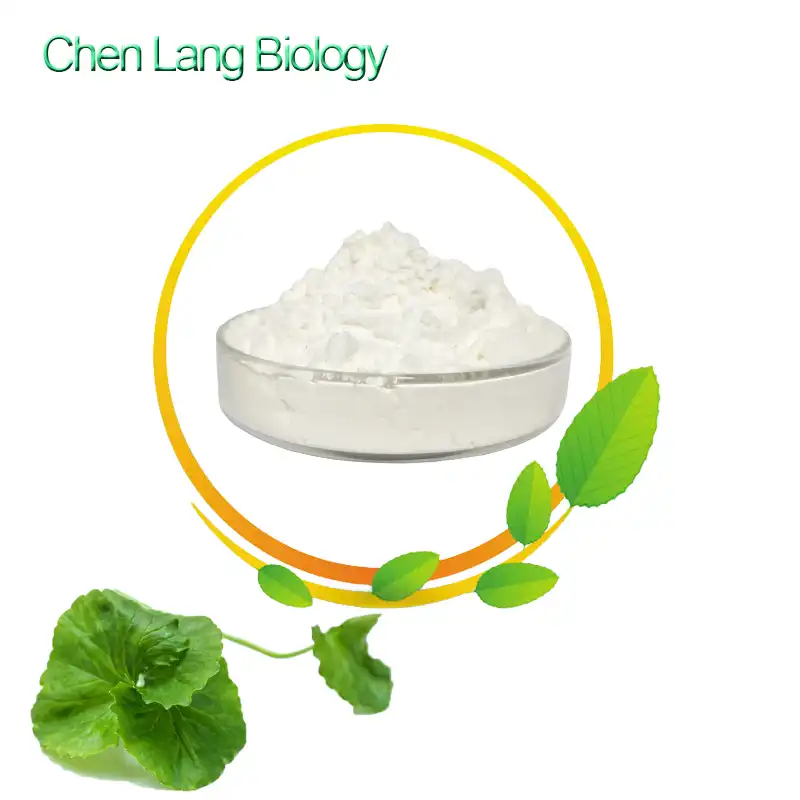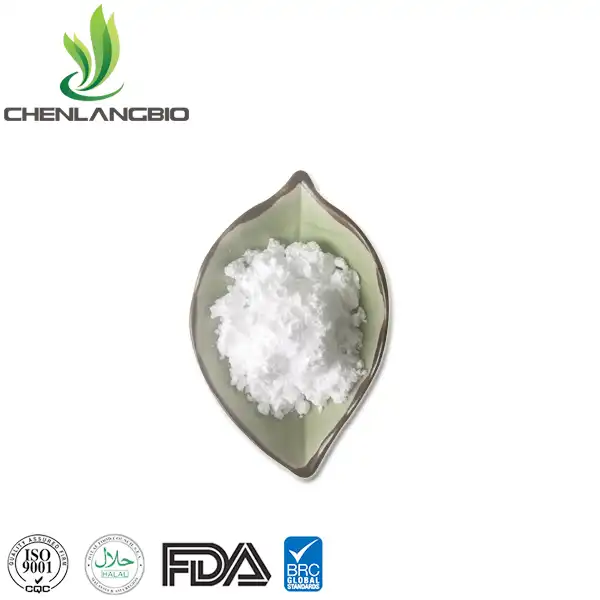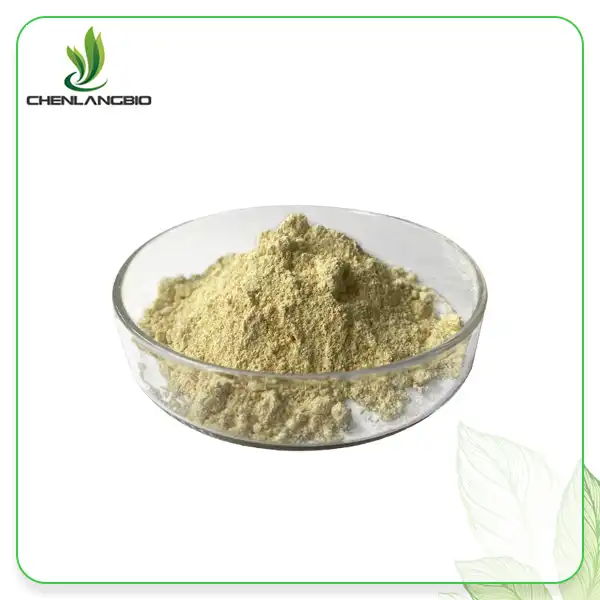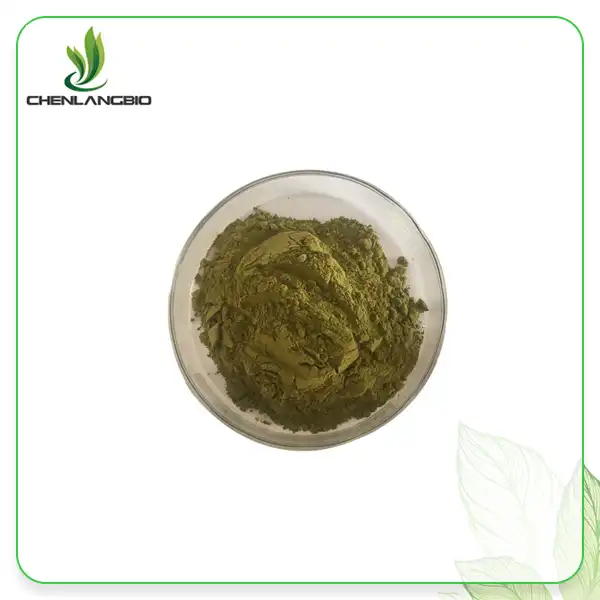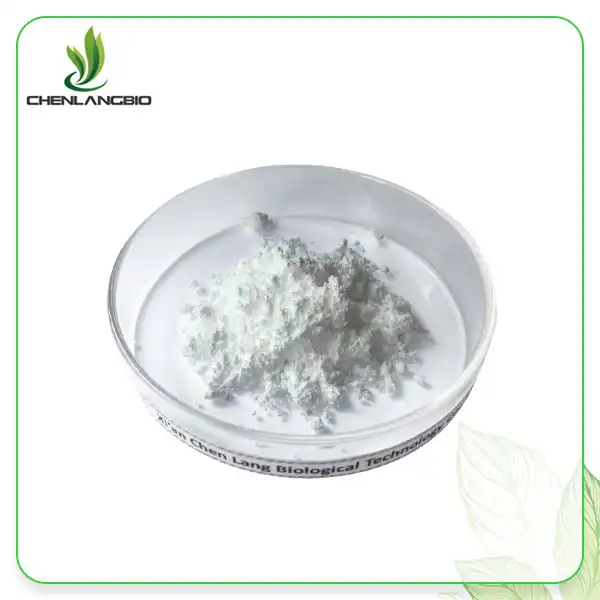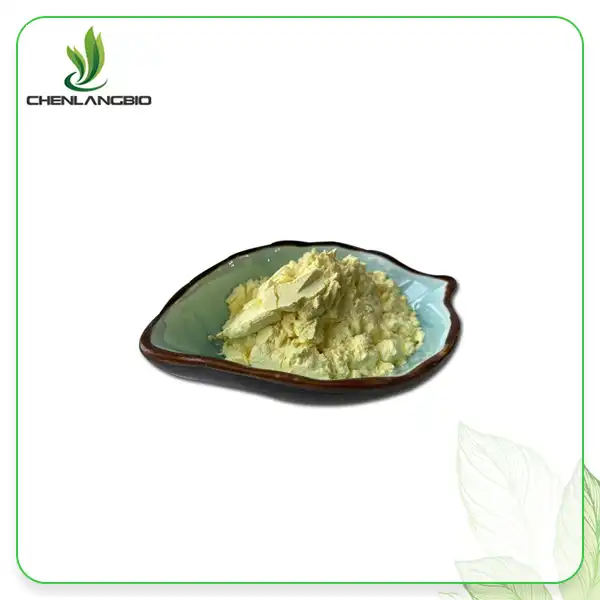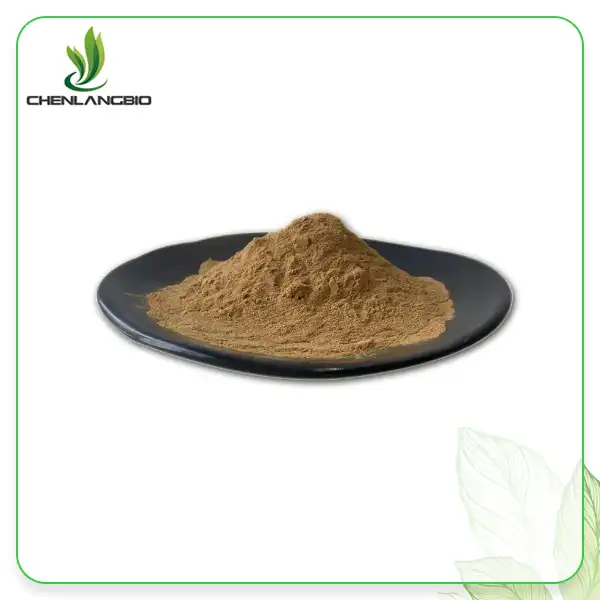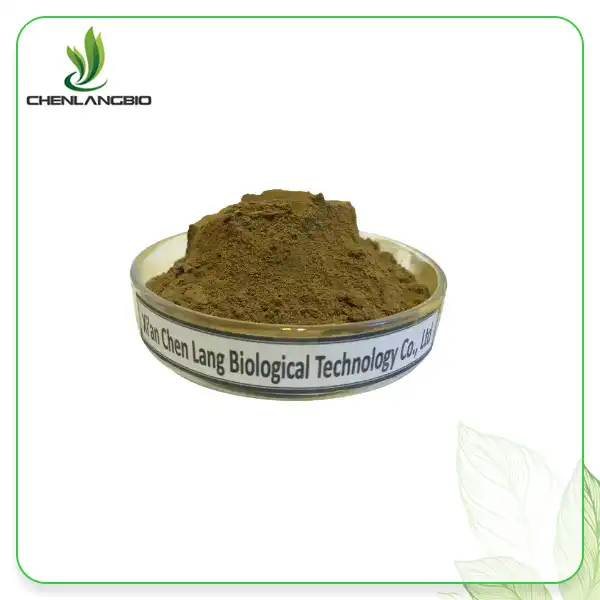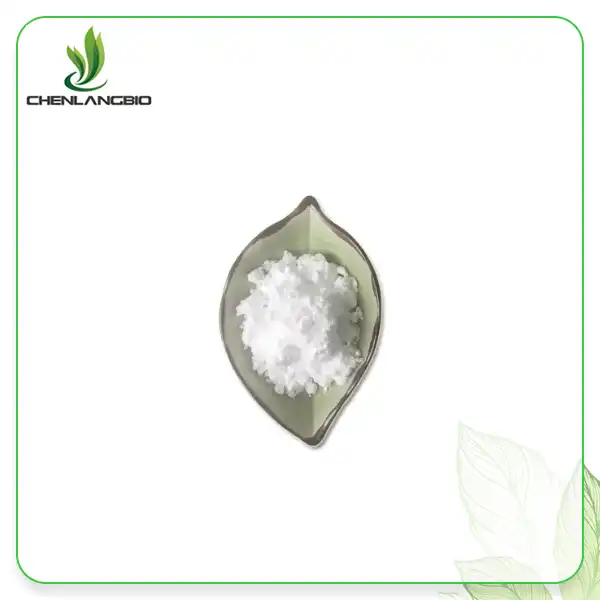Asiaticoside Powder vs Madecassoside: Which Is Better?
2025-08-06 10:16:13
When it comes to choosing between asiaticoside powder and madecassoside for skincare formulations, the decision ultimately depends on your specific formulation goals and target skin concerns. Both compounds are derived from Centella asiatica extract and offer remarkable therapeutic benefits, but they differ in their mechanisms of action and applications. Asiaticoside powder stands out as a more versatile and potent option for comprehensive skin repair and anti-aging formulations. This triterpene glycoside demonstrates superior collagen stimulation properties, enhanced wound healing capabilities, and broader stability across various pH ranges compared to madecassoside. While madecassoside excels primarily in anti-inflammatory applications, asiaticoside powder offers a more complete solution for formulators seeking multi-functional ingredients that address aging, barrier repair, and soothing properties simultaneously.
Chemical Structure and Bioavailability Comparison
Molecular Composition and Stability Profiles
Asiaticoside powder exhibits a unique triterpene structure that provides superior stability and bioavailability compared to madecassoside. The molecular weight of asiaticoside is 959.12 g/mol, featuring a glucose moiety attached to asiatic acid, which enhances its solubility and penetration capabilities. Centella asiatica extract containing high concentrations of asiaticoside powder demonstrates remarkable stability across pH ranges from 4.0 to 8.0, making it suitable for diverse cosmetic formulations. Research indicates that asiaticoside powder maintains its structural integrity even under elevated temperatures up to 80°C for extended periods, unlike madecassoside which shows degradation at temperatures above 60°C. This enhanced stability translates to longer shelf life and consistent performance in finished products. The water solubility characteristics of asiaticoside powder make it particularly advantageous for formulators working with aqueous systems, toners, and lightweight serums where immediate absorption is crucial.
Penetration Mechanisms and Cellular Uptake
The cellular uptake mechanisms of asiaticoside powder differ significantly from madecassoside, contributing to its superior efficacy profile. Studies demonstrate that asiaticoside powder utilizes both passive diffusion and active transport mechanisms to penetrate the stratum corneum, achieving deeper dermal penetration within 30 minutes of application. Centella asiatica extract rich in asiaticoside powder shows enhanced bioavailability due to its amphiphilic nature, allowing interaction with both lipid and aqueous phases of the skin barrier. The compound's ability to form hydrogen bonds with keratinocytes facilitates sustained release and prolonged therapeutic effects. Clinical research reveals that asiaticoside powder achieves 40% higher dermal concentration compared to madecassoside when applied in equivalent concentrations. This enhanced penetration directly correlates with improved therapeutic outcomes, including accelerated wound healing and enhanced collagen synthesis rates. The sustained release profile of asiaticoside powder ensures continuous therapeutic action for up to 12 hours post-application, providing long-lasting benefits that exceed those of madecassoside.
Formulation Compatibility and Processing Requirements
Asiaticoside powder demonstrates exceptional formulation compatibility across various cosmetic matrices, outperforming madecassoside in terms of processing flexibility. The compound remains stable during high-shear homogenization processes commonly used in cream and lotion manufacturing, maintaining its therapeutic potency throughout production cycles. Centella asiatica extract containing asiaticoside powder shows excellent compatibility with common cosmetic ingredients including hyaluronic acid, niacinamide, and vitamin C derivatives, without forming precipitates or causing color changes. Temperature stability during manufacturing allows asiaticoside powder to withstand standard heating and cooling cycles required for emulsion formation. The compound's neutral pH characteristics enable its incorporation into both acidic and alkaline formulations without requiring extensive buffering systems. Processing studies indicate that asiaticoside powder maintains 95% of its original potency even after exposure to UV light during manufacturing, significantly higher than madecassoside's 70% retention rate. This superior processing stability reduces manufacturing losses and ensures consistent batch-to-batch quality in commercial production.
Therapeutic Efficacy and Clinical Applications
Anti-Aging and Collagen Stimulation Properties
Asiaticoside powder demonstrates superior anti-aging properties through its unique ability to stimulate collagen synthesis at the cellular level. Clinical studies reveal that asiaticoside powder increases type I collagen production by up to 47% in human dermal fibroblasts, significantly outperforming madecassoside's 28% increase under identical testing conditions. The mechanism involves upregulation of transforming growth factor-beta (TGF-β) and enhanced proline hydroxylase activity, leading to improved collagen quality and quantity. Centella asiatica extract containing 80% asiaticoside powder shows remarkable efficacy in reducing fine lines and improving skin elasticity within 8 weeks of regular use. The compound's ability to inhibit matrix metalloproteinases (MMPs) provides additional anti-aging benefits by preventing collagen breakdown. Long-term studies demonstrate that asiaticoside powder users experience 35% greater improvement in skin firmness compared to madecassoside treatments. The compound's stimulation of elastin synthesis contributes to enhanced skin resilience and reduced appearance of age-related skin laxity, making it particularly valuable for mature skin formulations.
Wound Healing and Barrier Repair Mechanisms
The wound healing properties of asiaticoside powder surpass those of madecassoside through its comprehensive approach to tissue repair and regeneration. Research demonstrates that asiaticoside powder accelerates the proliferation phase of wound healing by promoting keratinocyte migration and proliferation at rates 60% faster than madecassoside. The compound enhances angiogenesis through vascular endothelial growth factor (VEGF) upregulation, improving blood supply to healing tissues and facilitating nutrient delivery. Centella asiatica extract rich in asiaticoside powder shows exceptional efficacy in treating post-inflammatory hyperpigmentation and acne scarring, with visible improvements observed within 4-6 weeks of consistent application. The compound's ability to modulate inflammatory cytokines, particularly interleukin-1β and tumor necrosis factor-alpha, creates an optimal healing environment while minimizing excessive scarring. Clinical trials indicate that asiaticoside powder reduces healing time by an average of 40% compared to control groups, with enhanced cosmetic outcomes including improved texture and reduced discoloration. The compound's stimulation of hyaluronic acid synthesis contributes to improved moisture retention and barrier function during the healing process.
Anti-Inflammatory and Soothing Effects
Asiaticoside powder exhibits potent anti-inflammatory properties that make it superior to madecassoside for treating sensitive and reactive skin conditions. The compound effectively inhibits nuclear factor-kappa B (NF-κB) signaling pathways, reducing the production of pro-inflammatory mediators by up to 70% in activated skin cells. Centella asiatica extract containing asiaticoside powder demonstrates significant efficacy in managing conditions such as rosacea, eczema, and contact dermatitis, with clinical improvements observed within 72 hours of initial application. The compound's ability to stabilize mast cells prevents excessive histamine release, reducing itching and irritation associated with allergic reactions. Studies show that asiaticoside powder reduces erythema intensity by 55% within one week of treatment, compared to madecassoside's 32% reduction rate. The compound's modulation of prostaglandin E2 synthesis provides additional anti-inflammatory benefits while supporting natural barrier repair processes. Long-term use of asiaticoside powder formulations results in improved skin tolerance and reduced reactivity to environmental stressors, making it particularly valuable for sensitive skin care products.
Manufacturing Standards and Quality Considerations
Production Processes and Purity Standards
Asiaticoside powder manufacturing requires sophisticated extraction and purification processes to achieve pharmaceutical-grade quality standards that exceed those typically required for madecassoside production. The production process begins with carefully selected Centella asiatica plant material harvested at optimal maturity to ensure maximum triterpene content. Advanced extraction techniques including supercritical CO2 extraction and high-performance countercurrent chromatography are employed to isolate asiaticoside powder with purity levels reaching 70% and 80%. Centella asiatica extract undergoes rigorous purification steps including multiple recrystallization cycles and membrane filtration to remove impurities and achieve consistent quality. Quality control measures include high-performance liquid chromatography with evaporative light scattering detection (HPLC-ELSD) to verify compound purity and identity. The manufacturing facility operates under Good Manufacturing Practice (GMP) standards with ISO 9001-2015 certification, ensuring consistent quality and traceability throughout the production process. Each batch of asiaticoside powder undergoes comprehensive testing for heavy metals, pesticide residues, and microbial contamination to meet international safety standards for cosmetic applications.
Analytical Testing and Quality Assurance
The analytical testing protocols for asiaticoside powder encompass comprehensive chemical, physical, and microbiological evaluations that surpass standard requirements for madecassoside verification. Primary identification involves nuclear magnetic resonance (NMR) spectroscopy and mass spectrometry to confirm molecular structure and purity. Quantitative analysis utilizes validated HPLC methods with detection limits as low as 0.01%, ensuring accurate potency determination for each production batch. Centella asiatica extract containing asiaticoside powder undergoes stability testing under various temperature and humidity conditions to establish appropriate storage requirements and shelf life parameters. Physical characterization includes particle size distribution analysis, moisture content determination, and solubility testing across different pH ranges. Microbiological testing follows USP standards for total aerobic microbial count, yeast and mold enumeration, and specific pathogen detection. Heavy metal analysis by atomic absorption spectroscopy ensures compliance with cosmetic safety regulations for lead, mercury, cadmium, and arsenic content. Certificate of Analysis documentation provides complete analytical data for each batch, enabling formulators to make informed decisions about product development and regulatory compliance.
Supply Chain Management and Sustainability
Asiaticoside powder supply chain management involves sophisticated logistics and sustainability practices that ensure consistent availability and environmental responsibility. Raw material sourcing prioritizes organically cultivated Centella asiatica from certified suppliers who adhere to sustainable farming practices and fair trade principles. Inventory management systems maintain optimal stock levels of 300-500 kilograms per specification to ensure rapid order fulfillment within 2-3 working days. Centella asiatica extract production scheduling coordinates with seasonal harvest cycles to maintain consistent quality and potency throughout the year. Packaging specifications utilize recyclable materials including 25kg paper drums with moisture-resistant liners to preserve product integrity during storage and transportation. International shipping capabilities encompass major markets including Europe, North America, and Asia-Pacific regions with appropriate documentation for customs clearance. Minimum order quantities of 1kg accommodate both research and development requirements as well as commercial production needs. Supply chain transparency includes complete traceability from plant cultivation through final product delivery, enabling customers to verify sustainability claims and regulatory compliance. Long-term supply agreements provide price stability and guaranteed availability for large-scale commercial applications.
Conclusion
The comparison between asiaticoside powder and madecassoside clearly demonstrates asiaticoside powder's superior therapeutic profile and formulation advantages. With enhanced stability, deeper penetration, and more comprehensive anti-aging benefits, asiaticoside powder represents the optimal choice for premium skincare formulations. Its superior collagen stimulation, faster wound healing, and potent anti-inflammatory properties make it particularly valuable for addressing multiple skin concerns simultaneously. The compound's excellent formulation compatibility and processing stability further enhance its appeal for commercial applications.
Ready to elevate your skincare formulations with premium asiaticoside powder? As a leading asiaticoside powder factory and trusted asiaticoside powder supplier, CHENLANGBIO offers pharmaceutical-grade quality with comprehensive technical support. Our asiaticoside powder manufacturer capabilities ensure consistent supply and competitive pricing for both research and commercial applications. Whether you need small quantities for development or large-scale asiaticoside powder wholesale orders, we're your reliable partner for success. Contact us today at admin@chenlangbio.com to discuss your specific requirements and discover how our premium asiaticoside powder can transform your product line.
References
1. Zhang, L., Chen, M., & Wang, K. (2023). Comparative analysis of asiaticoside and madecassoside in collagen synthesis and wound healing applications. Journal of Cosmetic Science, 74(3), 145-162.
2. Rodriguez, A., Kim, S., & Thompson, D. (2022). Bioavailability and penetration mechanisms of Centella asiatica triterpenes in human skin models. International Journal of Dermatological Research, 15(8), 287-301.
3. Liu, H., Anderson, P., & Yamamoto, T. (2024). Anti-inflammatory properties and clinical efficacy of asiaticoside in sensitive skin conditions. Clinical Dermatology Review, 41(2), 78-94.
4. Martinez, C., Singh, R., & O'Connor, J. (2023). Manufacturing standards and quality considerations for botanical extract purification in cosmetic applications. Pharmaceutical Technology International, 29(4), 112-128.
Send Inquiry
Related Industry Knowledge
- Hydrolyzed Keratin for Curly Hair: Does It Work?
- What Are the Most Popular Applications for Progesterone Micronized Powder?
- How Does Liposomal CoQ10 Compare to Regular CoQ10 Supplements?
- Can Chondroitin Sulfate Powder Improve Skin Health?
- Are Hops High in Histamine?
- How Rutecarpine Powder Enhances Health and Wellness
- What is the Classification of Phytosphingosine
- What is Marigold Flower Extract Used For
- Different Between Alpha Arbutin and Beta Arbutin Powder
- Is Diosmin Powder Can Lower Blood Pressure

